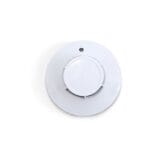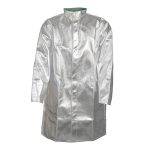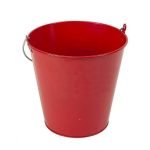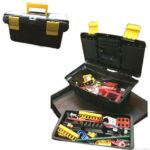Your list is empty, add products to the list to send a request
How To Use a Fire Extinguisher: An Easy 4-Step Process

23
Jun
When a fire breaks out, every second counts. Knowing exactly how to use a fire extinguisher can save lives and property. While fire extinguishers are simple tools, using them correctly is vital for effectiveness and safety.
In this guide, we walk you through a proven 4-step method for operating a fire extinguisher, share crucial safety tips, and answer the most common questions people have about fire extinguisher use. We’ll also highlight why the Agni Hunt CO2 Fire Extinguisher is a dependable choice for high-volume fire protection.
What Is the Four Step Process Fire Extinguisher Users Should Know?
The most effective way to use a fire extinguisher is to follow the PASS technique, a 4-step acronym endorsed by safety organizations:
1. Pull the Pin
- This releases the locking mechanism and allows you to operate the extinguisher.
- The tamper seal may break in the process.
2. Aim at the Base of the Fire
- Do not aim at the flames.
- Target the base where the fuel is burning.
3. Squeeze the Handle
- This activates the extinguisher and releases the extinguishing agent.
- Maintain a firm, controlled grip.
4. Sweep Side to Side
- Move the nozzle in a sweeping motion from side to side.
- Continue until the fire is out or the extinguisher is empty.
When to Use a Fire Extinguisher Safely
Only use a fire extinguisher if:
- The fire is small and contained
- You have a clear evacuation path
- You are trained or confident in using the device
- The correct extinguisher type is available (A, B, C, or specialty)
Evacuate and call emergency services if the fire is:
- Spreading rapidly
- Producing thick smoke
- Affecting electrical panels or flammable chemicals
What Is the Rule for Using a Fire Extinguisher?
The golden rule is: Use only if it’s safe to do so.
Remember:
- Never turn your back on the fire.
- Always stay between the fire and your escape route.
- If the fire does not go out after one extinguisher use, evacuate immediately.
Different Types of Fire Extinguishers and Their Use
Each fire extinguisher is rated for different types of fires:
- Class A – Ordinary combustibles (wood, paper, cloth)
- Class B – Flammable liquids (gasoline, oil)
- Class C – Electrical equipment (appliances, wiring)
- Class D – Combustible metals (specialized areas)
- Class K – Kitchen fires (fats, oils)
The Agni Hunt Fire Extinguisher is designed specifically for Class A fires, ideal for offices, schools, and residential spaces.
Key Fire Extinguisher Safety Tips
- Always check the pressure gauge monthly.
- Keep extinguishers easily accessible, not locked away.
- Ensure all family members or staff are trained in the PASS method.
- Do not use expired or damaged units.
- Replace or refill after every use, even partial.
Where to Place Your Fire Extinguishers
Proper placement ensures quick access in emergencies:
- Kitchen (but away from the stove)
- Garage or workshop
- Main exit routes
- Every level of your home or building
- Near fire-prone equipment (e.g., computers, heaters)
How to Maintain Your Fire Extinguisher
Routine maintenance extends life and ensures readiness:
- Monthly visual checks
- Annual servicing by a professional
- Hydrostatic testing every 5–12 years
- Refill immediately after use
The Agni Hunt unit is refillable, durable, and ISI-certified, making it a long-term safety investment.
Why Choose Agni Hunt Fire Extinguisher?
- Ideal for Class A fires (wood, cloth, paper)
- Uses water and CO2 for safe cooling and suffocation of fire
- High-capacity for longer discharge duration
- Easy-to-use squeeze grip and pressure indicator
- Meets Indian fire safety standards (ISI)
Perfect for schools, offices, apartment buildings, and retail shops.
Conclusion: Stay Ready with the PASS Method
Learning how to use a fire extinguisher correctly can make the difference between a minor incident and a disaster. The 4-step PASS technique—Pull, Aim, Squeeze, Sweep—is easy to remember and incredibly effective.
Combine the right knowledge with the right equipment like the Agni Hunt Fire Extinguisher to be prepared for any emergency.
FAQs
1. What is the four step process fire extinguisher?
The four steps are Pull the pin, Aim at the base, Squeeze the handle, and Sweep side to side—known as the PASS method.
2. When to use a fire extinguisher?
Use a fire extinguisher only when the fire is small, manageable, and you have a clear escape path. Never attempt to fight large or spreading fires.
3. What is the rule for using a fire extinguisher?
The golden rule is to ensure safety first. Use the extinguisher only if trained, the fire is contained, and an exit is accessible.
Safety starts with awareness.
Equip your space with the Agni Hunt Fire Extinguisher from fire supplies and ensure everyone knows the 4-step PASS process for quick, confident response.



























